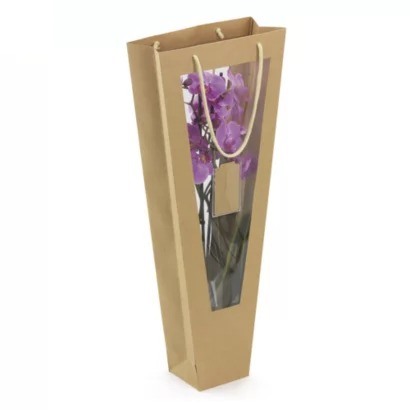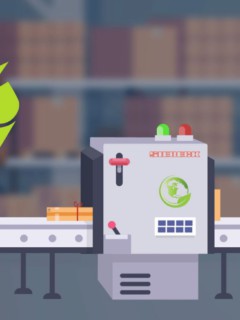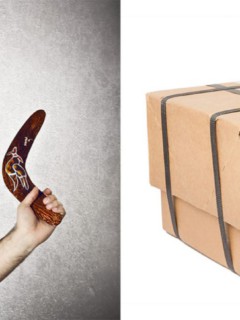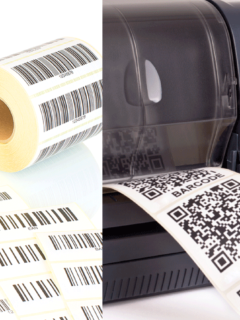Empty shopping streets, week three. The current situation is hitting the entire economy. The only ones who are currently benefiting from the situation are the food retail trade or traders of daily needs. The Federal Statistical Office reports sales increases of 7.7% – the main sales drivers are soap, toilet paper, flour and beer. All the others? Retailers are struggling and looking for new distribution channels. But how? What possible ways are there out of the crisis, besides public subsidies?
Nearly all product groups are experiencing a severe decline in sales – this is true for the stationary retail trade, but also for online trade. Hardly anyone is investing in “luxury goods”. The declining demand in the fashion sector, for example, is affecting the entire industry, from small boutiques to medium-sized businesses and large mail-order companies, as figures from the German Fashion Institute show: According to these, Google searches for fashion online shops have not risen as expected, but have actually fallen by a third.
The current situation is thus also forcing the supposed profiteers, the online retailers, to their knees – including the children’s fashion mail order company tausendkind, which has to file for insolvency due to a withdrawn financing commitment and despite increasing sales.
Shift to digital business models
With the courage of desperation, retailers are now using new ways. The ideas are diverse and innovative. The developments in retail are rapid, and according to the Chamber of Industry and Commerce, the crisis has a quasi accelerating effect on changes that were already imminent. “… retail is now developing in one year as it would have done in ten years,” says Boxbote boss Seibold (see below). These three approaches are promising:
1 Keep in touch.
This is how social media channels in particular become a shop window. With unprecedented creativity, retailers are using the only remaining way to keep in touch with customers. textilwirtschaft.de has compiled some truly outstanding examples:
How retailers and co. post in the crisis
2 Closing ranks – retailers organise themselves
Many are trying to find a way out of the crisis together, with some success. In addition to trader initiatives and voucher platforms, the example of the food truck Franken Delivery Service shows how it can work: At the initiative of one of the food truck operators, up to four trucks join forces here every day at one location and take orders. The advantage: the caller can choose from completely different culinary areas, similar to the Lieferando principle, and receives a joint delivery. Even if sales are lower than on a “normal day”, the offer is well received and there is hope that it will help to overcome the crisis.
3 Overcoming distance
Now is the time to move your presence to the internet. Many smaller shops and boutiques can at least stay afloat for a while by sending selection packages, offering live shopping or being reachable via Facetime. Lucky who can make at least a little turnover this way. But how do the goods get to the customer?
Contactless delivery
The well-known delivery companies are at their limits. DHL, Hermes, DPD and UPS have reacted by no longer requiring the recipient to sign for the delivery. Instead, the delivery person signs for it himself or takes a photo – thus documenting the delivery and the time of delivery. In addition, customers are asked to give permission to leave the parcel, which will save the deliverer direct contact and also some time.
Will there be more parcels now? Or fewer?
Are there more packages now? Or not? Time, which is urgently needed, because the parcel volume is approaching Christmas level. Although the official statements of the delivery staff are different, a spokesperson of Deutsche Post DHL confirms on request that there has “not been any noticeable increase in the volume of parcels so far”. At the same time, however, the company is preparing for an increase in mail and parcel shipments to private households: “Should more people in Germany decide to purchase goods online or via traditional mail order, there is currently nothing to prevent this in terms of transport and delivery,” says Deutsche Post.
Because: Of course, private households are already sending significantly more goods or ordering via mail order. The fact that the figures are officially reported to be unchanged is due to the fact that, on the
is due to the fact that, on the other hand, many items of business mail are no longer being sent. According to experts, the decline in business mail even amounts to more than 70%.
Alternative delivery services and retailer portals
However, alternative bring and delivery services are currently experiencing a clear upswing. Many companies offer door-to-door delivery, and the boss does not always drive himself. Entrepreneurs are increasingly using the services of bicycle couriers, for example, and taxi companies are also offering their capacities for transporting goods. However, it is extremely important that customers know about this. A notice on the homepage and communication via social media channels to regular customers is obligatory. Even greater multipliers, however, are portals such as those used by Thomas Zölch-Buba, managing director of the Bamberg bookshop Collibri. So anyone in Bamberg who wants to buy books or flowers from the local retailer, for example, can enter the products they are looking for in the portal “liefert.jetzt”. As a result list: All businesses in the vicinity that offer and deliver these products. This creates a marketplace of sometimes considerable size (in Bamberg and the surrounding area more than 130 traders have currently registered) and a local counterweight to Amazon and Co.
The Collibri bookshop benefits from this: “It was noticeable from the first day. We were able to increase our online sales tenfold. Now the first week is over and I’m good things that we can survive with it for a few weeks,” says Zölch-Buba.
Raimund Seibold, head of the Augsburg start-up Boxbote, confirms the same. On a homepage, Boxbote centres the offer of local retailers and delivers by cargo bike. Not a new idea, but suddenly more in demand than ever, with enquiries coming in from other cities as well: “We are being overrun right now (…), suddenly it can’t go fast enough,” says Seibold.
Can or do I want to offer goods delivery?
✅Delivery.
Do you take care of the delivery yourself? If you can handle the volume yourself or with the help of staff – good! It’s a great way to stay in touch with your customers. However, be sure to observe all relevant protective and hygiene precautions. Personal delivery at the front door only with the necessary distance.
If you want to use external service providers for delivery, find out about options via the Chamber of Commerce and Industry or on the net(werk). Some platforms also offer direct delivery.
✅Packaging
Either way, good packaging is a key factor. Focus on love even more than usual: your customers are starved for beautiful shopping experiences. In times like these, people think about each other in a whole new way. So in this crisis, despite all the drama, there is also an opportunity for local suppliers to win back lost sales and customers. While Amazon’s delivery time for non-essential products is currently up to 4 weeks, you can deliver the book, the vase or the new summer dress in a few days or maybe even hours. If you do this with a personal greeting and loving packaging, this effect will last even after the crisis.
Loving packaging at RAJA
✅Sensitive goods
When packing, also bear in mind that despite applicable contact rules, there is not necessarily someone at home to take delivery directly. So if you have not agreed a specific delivery time by telephone, your goods may be left on your doorstep or on the terrace for a few hours. Remember ,
sensitive goods securely so that they survive this undamaged.
Protection for sensitive goods at RAJA
✅Returns
The packaging should also be able to withstand collection and return transport (by yourself or by a delivery service). Of course, the customer’s right of return also applies here without restriction, especially relevant for clothing and selection orders.
Packaging suitable for return transport at RAJA
✅Sustainable?
Don’t forget the environmental aspect: safety first, of course. But as with packaging for mailing, the following also applies: it is not the quantity (e.g. of filling and cushioning material) that is decisive, but the correct application and a precisely fitting outer carton. Perhaps reusable solutions can even be found?
Reusable packaging in the mail order business?
















